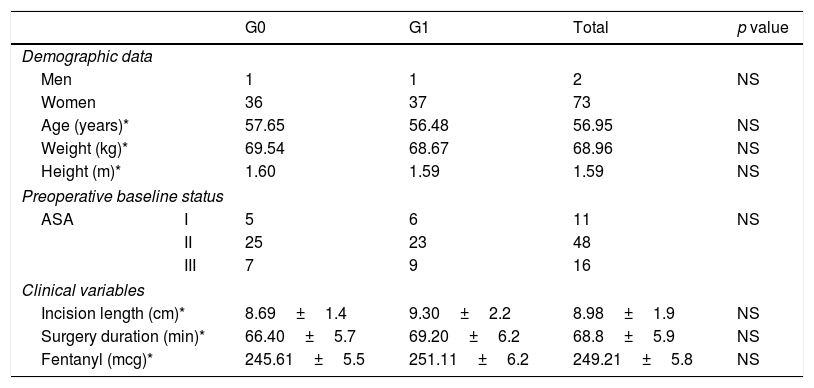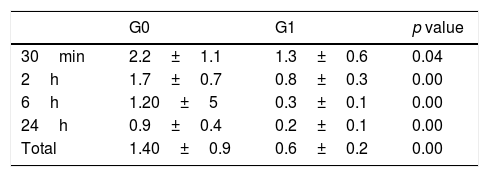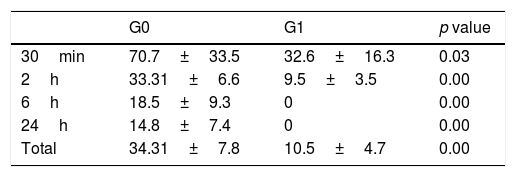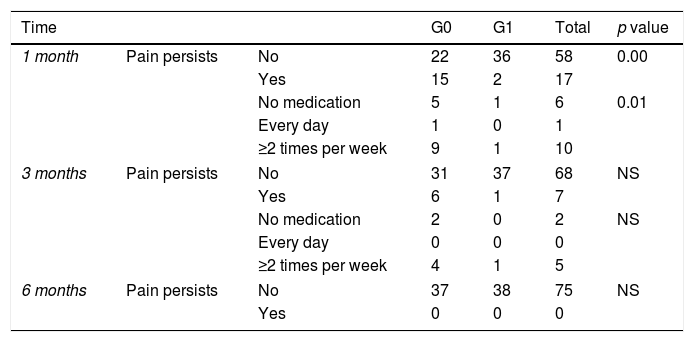The objective of this study is to determine whether the accomplishment of an interfascial blockade, the blocking of the cutaneous branches of the intercostals nerves in the axillary line (BRILMA) associated with a multimodal analgesic regimen improves post-operative analgesia and allows saving opioids after non-reconstructive surgery of breast.
Material and methodsA prospective, randomized and simple blind study was conducted on patients that underwent non-reconstructive breast surgery. The patients were randomly assigned to the blocking group, or to the standard post-operative analgesia group (paracetamol and dexketoprofen). The main variables analysed were the pain intensity assessed by the verbal numerical scale and the analgesic rescue needs with tramadol.
ResultsStatistically significant differences were observed in the consumption of tramadol during the study period (10.5mg in the BRILMA group, compared to 34.3 in the control group, p=.0001). There were also differences in the pain assessment, with lower values found in the BRILMA group.
ConclusionsIn non-reconstructive breast surgery, performing a BRILMA block allows obtaining lower pain scores, which implies less need for rescue analgesics and a significant saving of tramadol in the study period.
Nuestro objetivo es evaluar si la realización de un bloqueo interfascial, el bloqueo de las ramas cutáneas de los nervios intercostales en la línea axilar media (BRILMA) asociado a una pauta analgésica multimodal mejora la analgesia postoperatoria y permite ahorrar opioides tras cirugía no reconstructiva de mama.
Material y métodosRealizamos un estudio aleatorizado y prospectivo simple, donde los pacientes fueron sometidos a cirugía no reconstructiva de mama. Los pacientes fueron asignados aleatoriamente al grupo de realización del bloqueo, o al grupo de analgesia postoperatoria estándar (paracetamol y dexketoprofeno). Las variables principales analizadas fueron la intensidad del dolor evaluada mediante la escala numérica verbal y las necesidades de rescate analgésico con tramadol.
ResultadosSe observaron diferencias estadísticamente significativas en el consumo de tramadol durante el periodo de estudio (10,5mg en el grupo BRILMA, frente a los 34, 3 en el grupo control, p=0,0001). Asimismo también hubo diferencias en la evaluación del dolor con valores más bajos en el grupo BRILMA.
ConclusionesEn cirugía no reconstructiva de mama la realización de un bloqueo BRILMA permite obtener unas puntuaciones de dolor más bajas, lo que implica menor necesidad de rescate y un importante ahorro de tramadol en el periodo.
Artículo
Comprando el artículo el PDF del mismo podrá ser descargado
Precio 19,34 €
Comprar ahora












